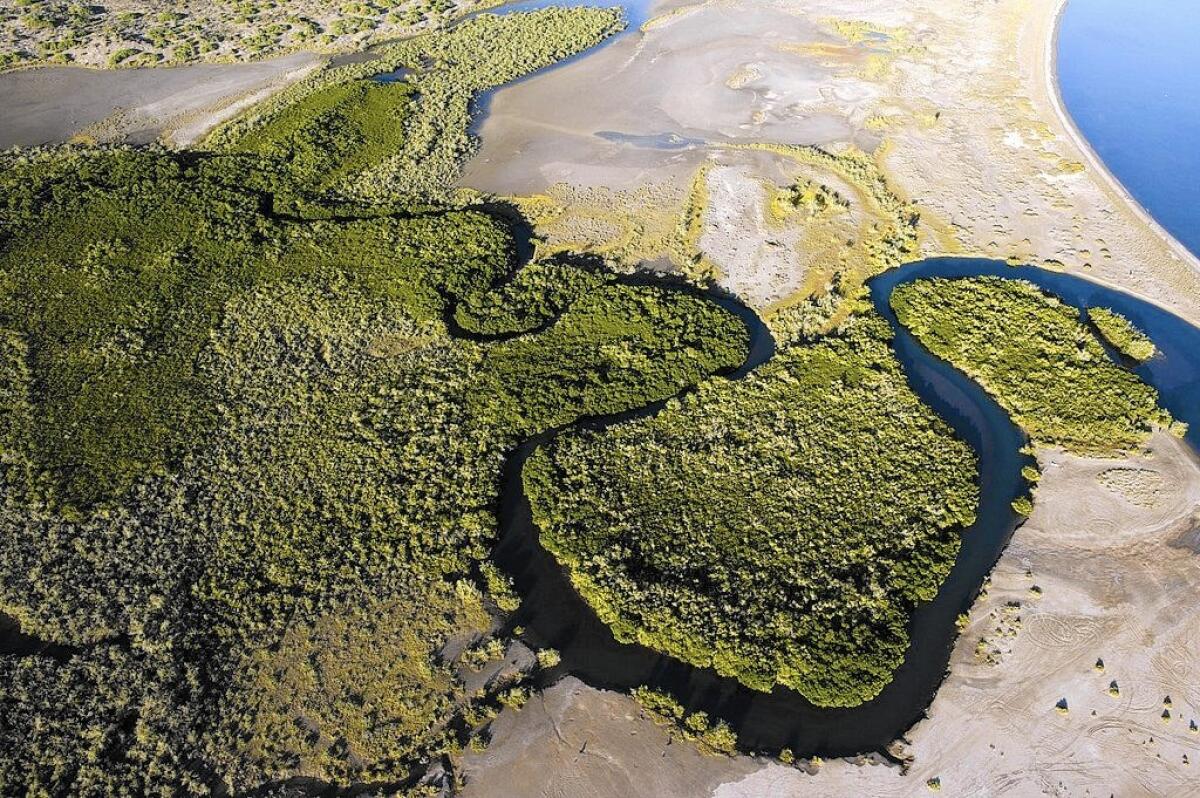Study reveals hidden value of Baja California mangroves in climate change fight

- Share via
Reporting from SAN DIEGO — As climate change has heightened concerns about the global decline of mangroves, a study released this week found that such ecosystems along the desert coast of Baja California may be more important than previously thought for keeping heat-trapping carbon dioxide out of the atmosphere.
Researchers at UC San Diego’s Scripps Institution of Oceanography discovered that despite their short and stunted appearance, mangroves in these desert locations had surprisingly high rates of sequestering carbon underground. In some cases, the ability was several times greater than that of lush mangroves in tropical locations.
“Desert mangroves specifically in Mexico, which are much smaller and cover a very small total land area, sequester comparable amounts of carbon to tropical mangroves in tropical rainforests,” said Paula Ezcurra, lead author of the report.
“Their value in mitigating climate change was sorely underestimated,” she said.
Mangroves are coastal shrubs or trees with complex root systems adapted to saltwater immersion and impacts from waves. Scientists have estimated that mangrove forests are shrinking at an annual rate of 3% because of human activity.
Destruction of mangroves can release thousands of years of stored carbon into the atmosphere.
The study, published in the journal Proceedings of the National Academy of Sciences, found that mangroves constrained within rocky inlets of the Baja coast have grown over their undecomposed root structures to keep pace with the rising ocean. The process has created 2,000-year-old layers of carbon-rich peat measuring up to 13 feet deep.
“In Baja there are mangroves that are surrounded by steep mountains,” Ezcurra said. “They can’t expand horizontally, so as sea level rises, they grow on top of themselves and the soil accumulates carbon in the form of peat below them.”
She and other Scripps researchers collected sediment in desert lagoons at Magdalena Bay and Balandra, analyzed the samples and then compared the results with samples taken from tropical lagoons in Mexico.
The coastal desert mangroves, which account for about 1% of Mexico’s arid northwest, are estimated to store 28% of the region’s underground carbon, according to the study.
“I think the conservation message is not to underestimate these ecosystems,” Ezcurra said. “It’s important in the assessment of environmental impacts, especially when considering land development.”
Smith writes for the San Diego Union-Tribune.



